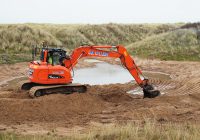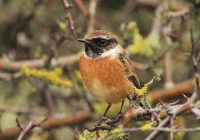Dr Phil Smith’s Wildlife Notes
December 2015

In my article on “wildlife in winter” for Formby Civic News (December 2015), I mentioned that one of the most striking features of recent winters has been extreme weather. Thus, December 2010 was the coldest for 100 years, while the same month in 2012 produced a deluge, with extensive flooding. More records were set in December 2013 with the highest storm surge since 1953 causing serve erosion. Continuing the pattern, December 2015 was one of the wettest and mildest since records began. I noted no frost at all throughout the month; indeed the average temperature nationally was about 5oC higher than usual. We did not share the severe flooding that occurred just up the road in north Lancashire and Cumbria but about twice the expected rainfall led to a recharge of the sand-dune water-table to something approaching normal winter levels. I monitored this at the Devil’s Hole by digging a hole in the deepest part of the slack and measuring the distance to the water surface at intervals. By the end of the month, there was 5cm depth of water in this area (see graph on th e right, though only about 5% of the slack was flooded. Appropriately for the almost sub-tropical conditions, Sefton Rangers found a whole Coconut covered in Goose Barnacles washed up on Crosby beach on 4th.
As usual, much of my time was spent writing up summer field work, one report updating my Inventory of Vascular Plants for the Sefton Coast. Despite over 150 years of botanical recording, we are still finding new plants here, as many as 17 being added this year. It brings the coast total to 1361 flowering plants and ferns, of which 1213 have been recorded in the sand-dunes. Over 200 of them are regionally or nationally notable. Based on available records, Sefton supports a greater variety of wildflowers that any other sand-dune area in northwest Europe.
The best part of three days was spent giving evidence on behalf of the Lancashire Wildlife Trust at public hearings on the Sefton Local Plan. The Plan recommends the development of several designated and proposed Local Wildlife Sites, to which the Trust has objected. Many of the participants severely criticised various environmental impacts of the Plan but it remains to be seen whether this will influence the Inspector.
Also time-consuming were several sessions helping to supervise the excavation of shallow scrapes for Natterjack Toads at Ainsdale Sandhills Local Nature Reserve. One of three new scrapes is an impressive 50m across in a slack previously infested with Sea Buckthorn. Funded through the Sefton Landscape Partnership Scheme, another large scrape was dug on the New Green Beach in an area where Natterjacks have struggled to breed successfully in recent years.
December bird-watching was generally uneventful but Sands Lake, Ainsdale held a Great Crested Grebe for a day or two. Here, the usual winter flock of Tufted Ducks barely reached double figures due to the mild conditions. Stonechats were prominent in several duneland areas, these perky little birds surviving better in warmer winters. Flooding at Marshside attracted two Scaup to join the usual Tufted Duck flock. It also concentrated a surprisingly large number of Brown Hares onto small areas of dry ground. I counted ten from Marshside Road. Meanwhile, the Weld Road saltmarsh at Birkdale produced my first Jack Snipe of the winter. A pair of Grey Partridges at Ainsdale dunes was a rare sight and a reminder of the massive decline suffered by this once common species. A rare excursion inland one afternoon found me at Lunt Meadows, the new Wildlife Trust reserve. The place was packed with birders attracted by the presence of several wintering Short-eared Owls. It required patience but, eventually, two owls showed well in the gathering gloom.




